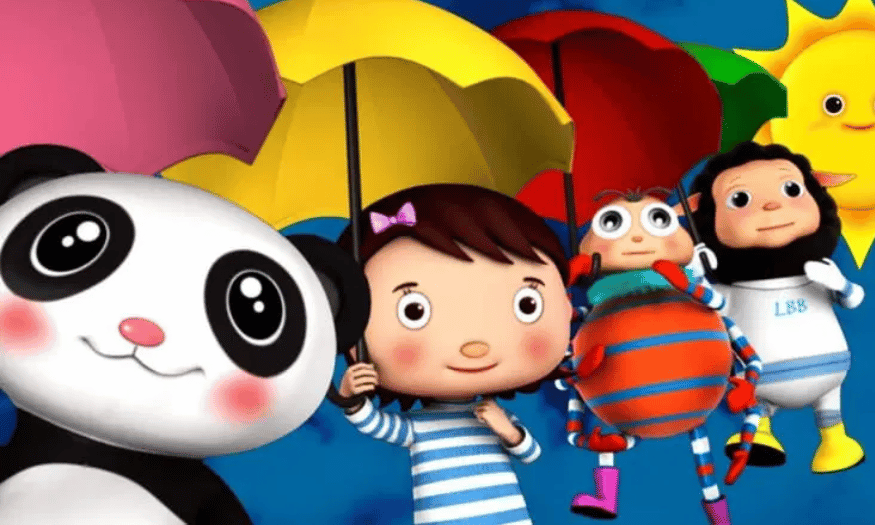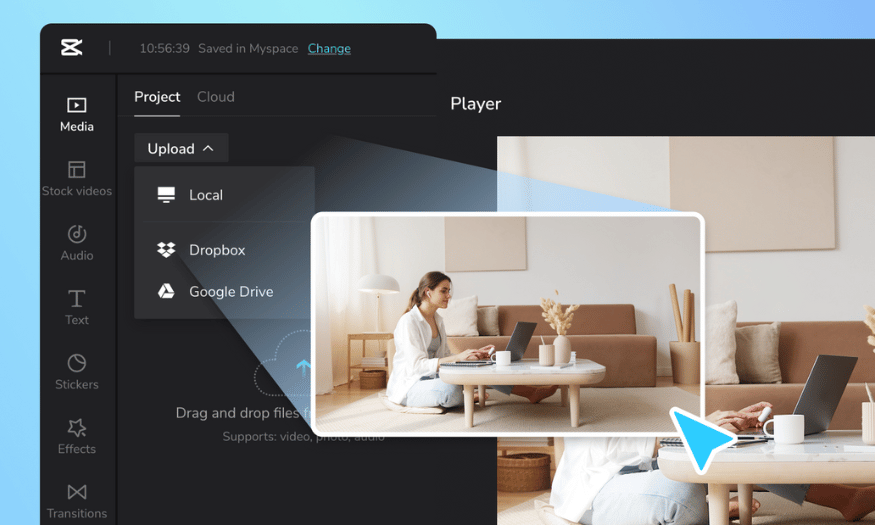Best Selling Products
Tutorial on Creating New AI Videos from Existing Videos
Nội dung
- 1. Definition and significance of AI video creation
- 2. Benefits of Using AI in Video Production
- 3. Popular applications of AI video in marketing and communication
- 3.1 Personalized advertising
- 3.2 Social media content
- 3.3 Product Instructions
- 3.4 News and reports
- 3.5 Training and e-learning
- 4. AI technologies used in video creation
- 4.1 Machine Learning và Deep Learning
- 4.2 Computer Vision
- 5. Process of creating AI videos from available videos
- 5.1 Step 1: Prepare the original video
- 5.2 Step 2: Video analysis and processing
- 5.3 Step 3: Apply AI techniques
- 5.4 Step 4: Editing and fine-tuning
- 5.5 Step 5: Export the final video
- 6. Adobe Premiere Pro professional AI video creation tool
- 7. Conclusion
In the current era of 4.0 technology, using artificial intelligence (AI) to create new content from existing videos is no longer strange. AI tools are becoming increasingly powerful and easy to use, helping users turn old videos into more creative and attractive products. In this article, Sadesign will guide you step by step to create new AI videos from existing videos, from choosing tools to editing techniques, helping you improve content quality and save time.

In the current era of 4.0 technology, using artificial intelligence (AI) to create new content from existing videos is no longer strange. AI tools are becoming increasingly powerful and easy to use, helping users turn old videos into more creative and attractive products. In this article, Sadesign will guide you step by step to create new AI videos from existing videos, from choosing tools to editing techniques, helping you improve content quality and save time.
1. Definition and significance of AI video creation
Creating AI videos from existing videos is the process of using artificial intelligence technology to transform, upgrade or recreate content from an original video. Sadesign wants to emphasize that this process is not simply video editing, but also the application of intelligent algorithms to create new products with richer quality and content. Thanks to AI, we can create new videos without having to start over, saving time and effort.
The implications of this in today’s digital age are huge. As video content becomes increasingly popular, leveraging AI technology to produce videos helps businesses and individuals quickly adapt to the ever-changing needs of the market. This not only saves on production costs but also opens up many creative possibilities that were previously difficult to achieve. Furthermore, AI video creation also creates many opportunities to enhance the user experience, thereby increasing connection and interaction with customers.
In addition, the use of AI video also contributes to resource conservation. Instead of having to re-record the entire video, businesses can take advantage of available resources, thereby reducing the amount of electronic waste and saving energy. This not only brings economic benefits but also demonstrates the social responsibility of businesses in protecting the environment.
.png)
2. Benefits of Using AI in Video Production
One of the biggest benefits of using AI in video production is time savings. AI has the ability to process and transform videos quickly, from editing images to creating special effects that previously required a lot of human time and effort. This helps shorten video production times, allowing businesses to launch products faster and seize market opportunities in a timely manner.
Reducing costs is another key benefit. Instead of investing in expensive filming equipment or hiring a large crew for a project, businesses can use AI to optimize the production process. This not only reduces costs, but also allows small businesses to get in on the game without worrying about budgets.
Increasing creativity is one of the greatest strengths of AI technology. AI algorithms are capable of analyzing and creating new content patterns that humans can hardly imagine. This opens up many new creative possibilities, from creating interactive videos to building unique content for marketing campaigns. Furthermore, AI can improve video quality by enhancing the image and sound, ensuring that the final product is always at its best.
3. Popular applications of AI video in marketing and communication
3.1 Personalized advertising
In today's digital age, personalized advertising has become an important trend in marketing. AI video allows businesses to create different versions of advertising videos, customized for each specific customer segment. Thanks to the ability to analyze big data, AI can identify the characteristics, interests and behaviors of each consumer group, thereby creating the most suitable content. This not only helps improve advertising effectiveness but also creates a better user experience, making customers feel cared for and understood.
For example, a fashion brand could use AI video to produce different ads for different age groups. Videos for young people could focus on an active lifestyle, while videos for older people could emphasize elegance and quality. This would not only increase conversion rates but also create a stronger connection between the brand and the customer.
.png)
3.2 Social media content
Social media video content is becoming an integral part of businesses’ communication strategies. AI video helps create short, engaging videos that are optimized for different social media platforms such as Instagram, TikTok, and Facebook. AI tools can analyze content trends and user preferences, thereby suggesting creative video ideas. This makes it easier for businesses to keep up with rapid changes in the market and attract consumers’ attention.
Furthermore, AI videos can automatically generate relevant content based on specific times and locations. For example, a promotional video can be tailored to local events or holidays, resulting in higher engagement. This not only increases viewership but also builds a stronger brand on social platforms.
3.3 Product Instructions
AI videos also play a vital role in creating product tutorial videos. Businesses can transform demo videos into multiple versions that are tailored to different markets or customer segments. This not only saves time and production costs, but also ensures that the product message is conveyed in the clearest and most effective way.
For example, a technology company can create software tutorial videos for different user groups, from beginners to experienced users. AI videos can automatically adapt the content and language to suit each audience, making it easier for viewers to understand and apply. This not only improves customer service but also increases consumer satisfaction.
3.4 News and reports
In the media industry, AI video is being used to automatically generate news videos from text and image sources. This technology allows news organizations to quickly produce engaging news videos without having to shoot live. AI is capable of analyzing text content, selecting appropriate images, and generating complete videos in just a few minutes. This helps media organizations save time and resources, while ensuring that information is updated quickly and accurately.
Additionally, the use of AI video in news can increase audience engagement. Automated news videos can be personalized to the viewer’s preferences, increasing their appeal and keeping them engaged for longer. This is especially important as consumers have more content options and can easily switch to other channels if they don’t find what they’re looking for.
3.5 Training and e-learning
AI video is becoming a powerful tool in the field of training and e-learning. This technology allows educational institutions to create interactive and dynamic video lectures from existing content. Instead of just providing static learning materials, AI video can transform lectures into more engaging learning experiences, making it easier for students to absorb knowledge.
Furthermore, the application of AI videos in e-learning also allows for personalization of the learning process. Videos can be adjusted to suit each student’s learning style, thereby making it easier for them to grasp knowledge. Features such as interactive questions or live assessments can also be integrated, creating a dynamic and engaging learning environment.
.png)
4. AI technologies used in video creation
4.1 Machine Learning và Deep Learning
Machine Learning (ML) and Deep Learning (DL) are two core technologies in most AI applications today, especially in the field of video creation. ML uses algorithms to learn from data and improve performance over time, while DL, a branch of ML, uses deep neural networks to process and analyze more complex data. When applied to video, these algorithms help recognize and reproduce elements such as motion, color, and image structure.
A typical application of Deep Learning is video enhancement. When Nam used this technology to enhance a video for a client, the algorithm was able to automatically recognize and sharpen small details, thereby turning a blurry video into a sharp and detailed work. This not only improves the viewer experience but also saves time in video production and editing.
Furthermore, ML and DL are also used to analyze user behavior, thereby optimizing video content according to audience preferences. AI tools can learn from views, feedback, and interactions to create more engaging videos in the future. This helps content producers stay ahead in the increasingly fierce competition.
4.2 Computer Vision
Computer Vision is an important field in AI that allows computers to “see” and understand the content of videos. This technology helps to recognize objects and faces, track movements, and segment videos into meaningful parts. Thanks to Computer Vision, videos can be automatically analyzed and processed efficiently.
A typical application of Computer Vision is the automatic cutting and editing of videos. Nam once applied this technology to convert a 2-hour long video into many short 1-minute clips, suitable for social networks. This process not only saves dozens of hours of manual work but also ensures that these short clips are attractive and high-quality, helping to attract viewers' attention.
By using Computer Vision, video producers can quickly create new content from old videos without having to intervene much in the editing process. This not only improves work efficiency but also creates many new creative opportunities for users in building attractive content.
.png)
5. Process of creating AI videos from available videos
5.1 Step 1: Prepare the original video
To start, you need to prepare the original video that you want to transform. It is important that the video is of the best quality possible. Make sure that you have the rights to use this video and that it is suitable for your final purpose. Nam recommends that you choose a high-resolution video, at least Full HD (1920×1080), to ensure the image quality after AI processing. A clear video will help optimize the results and bring a better experience to the viewer.
5.2 Step 2: Video analysis and processing
In this step, the AI will perform a detailed analysis of the video. The system will recognize the structure of the video, the objects, faces, and movements in it. The AI will identify the elements that need to be improved or changed. For example, in a promotional video, the AI can automatically recognize the logo, product, and main characters, and then decide how to process it to enhance the appeal of the product.
5.3 Step 3: Apply AI techniques
This is the most important stage, where AI really “works its magic” on your video. Depending on the goal, AI can enhance the image quality, change the artistic style, add or remove objects, and create special effects. Nam once applied AI to turn a regular promotional video into an animated style, creating surprise and attraction for the audience. This not only refreshes the content but also increases the interaction with the viewer.
5.4 Step 4: Editing and fine-tuning
Once the AI has processed the video, you need to review the results and make any necessary adjustments. Review the parameters and add or modify some details as needed. Nam always emphasizes that while AI is powerful, the final creativity and control is still in the hands of humans. This is an important step to ensure that the video is not only beautiful but also consistent with the message you want to convey.
5.5 Step 5: Export the final video
Finally, you will export your video in the appropriate format, such as MP4 or MOV, along with your desired resolution. Don’t forget to set the compression settings appropriate for the platform you are distributing it on. Nam often recommends that clients export multiple versions for different platforms, such as a high-quality version for YouTube and a lighter version for Facebook. This helps optimize the viewer experience on each platform and increases the effectiveness of the media.
(1).png)
6. Adobe Premiere Pro professional AI video creation tool
Adobe Premiere Pro is one of the most powerful video editing tools available today, and it also integrates many AI features to enhance the user experience. With the ability to automate many editing processes, Premiere Pro helps users save time and effort in video production. Features like Auto Reframe, which automatically adjusts the aspect ratio for different platforms, are a good example of the use of AI in this software.
During editing, Adobe Premiere Pro also applies Machine Learning algorithms to analyze the video and suggest appropriate effects, transitions, or audio. This not only enhances creativity but also reduces the burden on editors, allowing them to focus on artistic and content aspects.
In addition, Adobe Premiere Pro also supports users in creating content for social networks, with the ability to export videos quickly and in high quality. Thanks to the integration of AI technology, this tool has become the top choice for professional and amateur video producers, helping them create quality products without much previous experience.
.png)
7. Conclusion
Creating new AI videos from existing videos not only saves time but also opens up a lot of creative opportunities for content creators. With the help of AI tools, you can easily transform old ideas into new and attractive products. Experiment with the software and techniques we mentioned, and you will see that content creation has never been easier. Start your creative journey today!












































